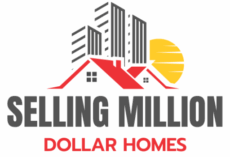What is the least expensive way to sell your house? ‘Sale by owner’ is the least expensive way to sell a house. This is a question you might ask yourself as a new seller of owned house.
To tell you the truth, selling a house is one of the biggest financial decisions you’ll ever make. Yet, when most people start thinking about selling, their focus is on one thing: the sale price. However, here’s a truth nobody tells you upfront — the real financial pinch often comes from the costs you’ll pay just to sell it. So if you’ve ever wondered, “What is the least expensive way to sell your house?” you’re not alone. And today, you’re about to discover not just one, but several budget-friendly strategies that can save you thousands.
Let’s dive deep into the smartest, cheapest ways to sell your home — and how you can avoid the traps that eat away at your profits.
The True Costs of Selling a House
Before you even put that ‘For Sale’ sign in your yard, it’s crucial to understand where your money will go. Many homeowners are shocked when they realize how much it actually costs to sell a home.
Here’s a breakdown:
- Real Estate Agent Commissions: Traditionally, this takes up a staggering 5% to 6% of your home’s sale price. On a $300,000 home, that’s $15,000 to $18,000 — gone.
- Closing Costs: These typically range from 1% to 3% of the sale price, covering things like attorney fees, escrow fees, title insurance, and taxes.
- Repairs and Staging: To make your home market-ready, you might need to paint, fix that leaky faucet, or replace worn-out carpets. Costs here can spiral out of control quickly.
- Marketing Fees: Professional photography, online listings, and print ads aren’t always free.
When you add it all up, selling a house the traditional way can cost upwards of 10% of your home’s value. That’s why finding a more affordable option makes perfect financial sense.
Cheapest Ways to Sell Your House (Ranked from Least to Most Expensive)
Now that you know where the money goes, let’s explore your least expensive selling options — starting with the method that can save you the most.
1. For Sale By Owner (FSBO)
This method puts you fully in charge. You handle the pricing, marketing, showings, negotiations, and paperwork. The biggest advantage? You skip the real estate agent commission entirely.
Average Savings: 5%–6% of your home’s value.
Imagine pocketing an extra $18,000 on a $300,000 home. Tempting, right? And it gets better — with online listing platforms and social media, FSBO is easier than ever.
But here’s the catch: FSBO requires time, effort, and a good understanding of local market trends. If you misprice your home, legal mistakes or poor negotiation can wipe out those savings.
When it Makes Sense: If you’re selling in a hot market, your home’s in great shape, and you’re comfortable handling contracts and legal details, FSBO can be your golden ticket.
2. Sell to a Cash Buyer or Real Estate Investor
If the idea of open houses, endless repairs, and haggling stresses you out, this method might be your antidote. Cash buyers purchase homes as-is — no cleaning, no fixing.
Savings: You typically avoid agent commissions, staging, and repair costs.
Speed: These deals often close in as little as 7–14 days.
Pros:
- No showings or marketing
- No repairs needed
- Quick closing
Cons: Cash buyers typically offer 70%–80% of your home’s market value.
When to Choose This: If you’re facing foreclosure, relocating quickly, or handling an inherited property you don’t want, this option trades top-dollar offers for speed and simplicity.
3. Use a Discount Real Estate Broker or Flat Fee MLS Service
Not ready to go full DIY? Discount brokers offer a middle ground. They typically charge 1%–2% or a flat fee to list your home on the MLS (Multiple Listing Service).
Savings: Cut your listing agent commission in half while still tapping into professional marketing services.
Pros:
- MLS exposure (where 90%+ of buyers look)
- Access to professional advice
Cons:
- Limited services compared to full-service agents
- You may still have to pay a buyer’s agent commission (2.5%–3%)
When It’s Smart: If you want to handle some parts of the sale yourself but value an expert’s guidance on pricing, paperwork, or negotiations.
4. Sell to an iBuyer
iBuyers are companies like Opendoor and Offerpad that buy homes directly from sellers using technology-driven pricing models.
Savings: While you’ll skip traditional agent fees and showings, iBuyers typically charge a service fee between 5% and 8%, making it more expensive than FSBO or cash buyers.
Pros:
- Fast, hassle-free offers
- Flexible closing dates
Cons:
- Service fees can rival agent commissions
- Lower offers compared to market value
Ideal For: Homeowners looking for certainty and convenience over maximum profit.
Hidden Costs to Watch Out For
Even with these cost-saving methods, certain fees can sneak up on you. Ignore them, and your “cheap” sale might not be so cheap after all.
Watch out for:
- Closing Costs: Still your responsibility in many cases
- Transfer Taxes: Varies by state
- Repairs Post-Inspection: Buyers can request fixes after the home inspection
- Legal Fees: Essential if selling FSBO
- Moving Costs: Don’t forget about this!
Being prepared for these expenses means no surprises, and no last-minute scrambling to cover unexpected bills.
Pro Tips to Cut Costs When Selling
Want to slash your home-selling expenses even further? Here’s how savvy sellers do it:
- Negotiate Agent Commissions: Everything’s negotiable. Many agents are willing to lower their rates to secure your listing.
- Sell As-Is: Skip costly repairs and let buyers know upfront.
- DIY Staging and Marketing: Clean, declutter, and take high-quality photos with your smartphone.
- Offer Incentives Instead of Repairs: Give buyers a credit toward closing costs instead of fixing minor issues.
- Get Multiple Cash Offers: Pit investors against each other to get the best price.
Each of these strategies chips away at your expenses, helping you hold onto more of your hard-earned equity.
Should You Prioritize Cost or Convenience?
Here’s the million-dollar question: should you aim for the absolute cheapest way to sell, or pay a bit more for a smoother, faster process?
Trade-Offs to Consider:
- FSBO and Cash Sales: Lowest costs, but you may sell for less or face complex negotiations.
- Discount Brokers: Balance between savings and expert support.
- iBuyers: Maximum convenience, moderate costs.
The right choice depends on your financial goals, time frame, and risk tolerance. If you need every dollar and have time to spare, FSBO could be perfect. If you’re relocating fast or hate hassle, a cash buyer or iBuyer might be worth the trade-off.
Choose Wisely, Save Big
Selling your home doesn’t have to drain your bank account. By exploring FSBO, cash buyers, discount brokers, and iBuyers, you can find a path that aligns with your needs and budget.
Recap of Least Expensive Ways to Sell:
- For Sale By Owner (FSBO) — Maximum savings, maximum effort.
- Cash Buyers/Investors — Quick, hassle-free, lower offers.
- Discount Brokers/Flat Fee MLS — Balanced savings and support.
- iBuyers — Convenience at a cost.
The key is weighing the potential savings against the risks and effort required. Selling a house isn’t one-size-fits-all, but now you have the insights to make the smartest, cheapest decision possible.
Ready to save thousands on your home sale? Start by exploring these options today — your wallet will thank you. Discover more advice from Selling Million Dollar Homes.



